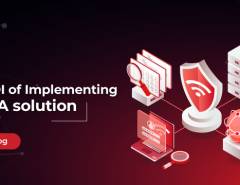Disasters, whether they are natural or man-made, can strike anytime without any kind of due notice. Any business, small or big, will need to anticipate the possibility of such disasters and have a plan in place. While one tactic is to have a backup as a service (BaaS) plan, another significant way to plan against disasters is to utilize a Disaster Recovery as a Service (DRaaS) plan.
Disaster Recovery as a Service or DRaaS basically refers to the replication and hosting of physical and virtual services to a second location, either to a second application or on the cloud, which is usually located in a distant second site. In the event of a man-made or natural catastrophe, these replicated systems and data can be booted and accessed.
The advantages of DRaaS
DRaaS offers many advantages to businesses, especially small and medium-sized ones which may lack the resources to develop a strong disaster recovery plan. It saves businesses the cost of having to maintain an in-house disaster recovery environment with extra resources in the IT department for testing. A key differentiator between DRaaS and cloud-based backup services is that DRaaS protects data and offers standby computing capacity to help in recovery.
Among the key advantages of DRaaS is rapid and immediate recovery. In a conventional setting, a lot of time and costs are wasted in recovering and moving the backed up data. However, in DRaaS, the recovery can be rapid and immediate, saving precious time. Normal operations can resume within minutes, leading to lesser downtime and better performance. Some providers use a DRaaS self-service button which can initiate recovery immediately without the need for manual intervention.
When organizations choose a DRaaS provider, it is important they screen potential candidates on Recovery Point Objective (RPO) and Recovery Time Objective (RTO). RPO refers to the amount of data loss in between backups. If an organization wants a stricter RPO, then the provider must provide more frequent backups. RTO refers to the amount of time required to recover an application to the point where it is useable. A proper recovery process can limit RTO to a time of just 15 minutes.
How to choose the proper DRaaS solution
Ease of use is also an important factor to consider when short-listing a DRaaS provider. The interface should be simple, intuitive and easy-to-use. Different versions of files should be easily identifiable and recoverable as that will save precious time in the actual recovery process. The security of the data is highly important – in an age of high-profile data breaches which affect the organization’s reputation, any DRaaS solution must provide proper encryption along with other measures to ensure that the backed up data remains safe and secure.
Additionally, other key features to consider are backups of external drives, backup to local drive, selective recovery along with endpoint backup and authentication service integration. Before implementing a DRaaS solution, network administrators can compare their options on the following parameters:
- Performance in backup and recovery
- Time to first data
- Ease of use
- Pricing
- Contract flexibility
With a number of DRaaS providers in the market, it is important for an organization to assess the features available and make an appropriate choice based on the organization’s goals and objectives. Disaster Recovery as a Service can be an empowering step an organization takes towards ensuring a streamlined, effect disaster recovery process, benefitting the organization. However, due diligence must be conducted and all the options assessed before choosing a DRaaS solution. Seqrite Services provides vendor agnostic, holistic and comprehensive consulting services allowing organizations to proactively protect IT assets and respond against cybersecurity threats.
As an IT security partner for your business, Seqrite provides comprehensive endpoint security from advanced cyber threats. To know more, visit our website or




